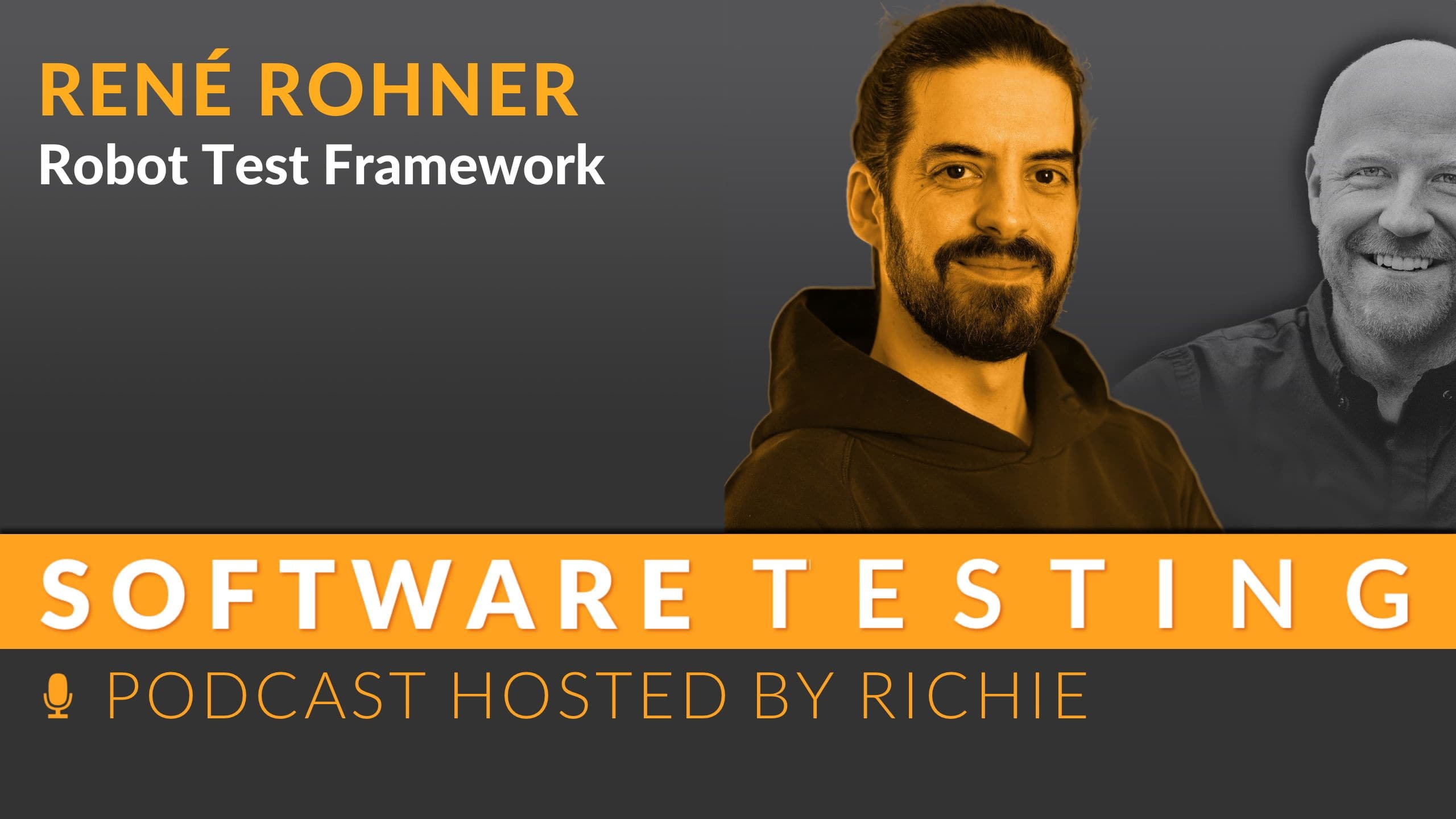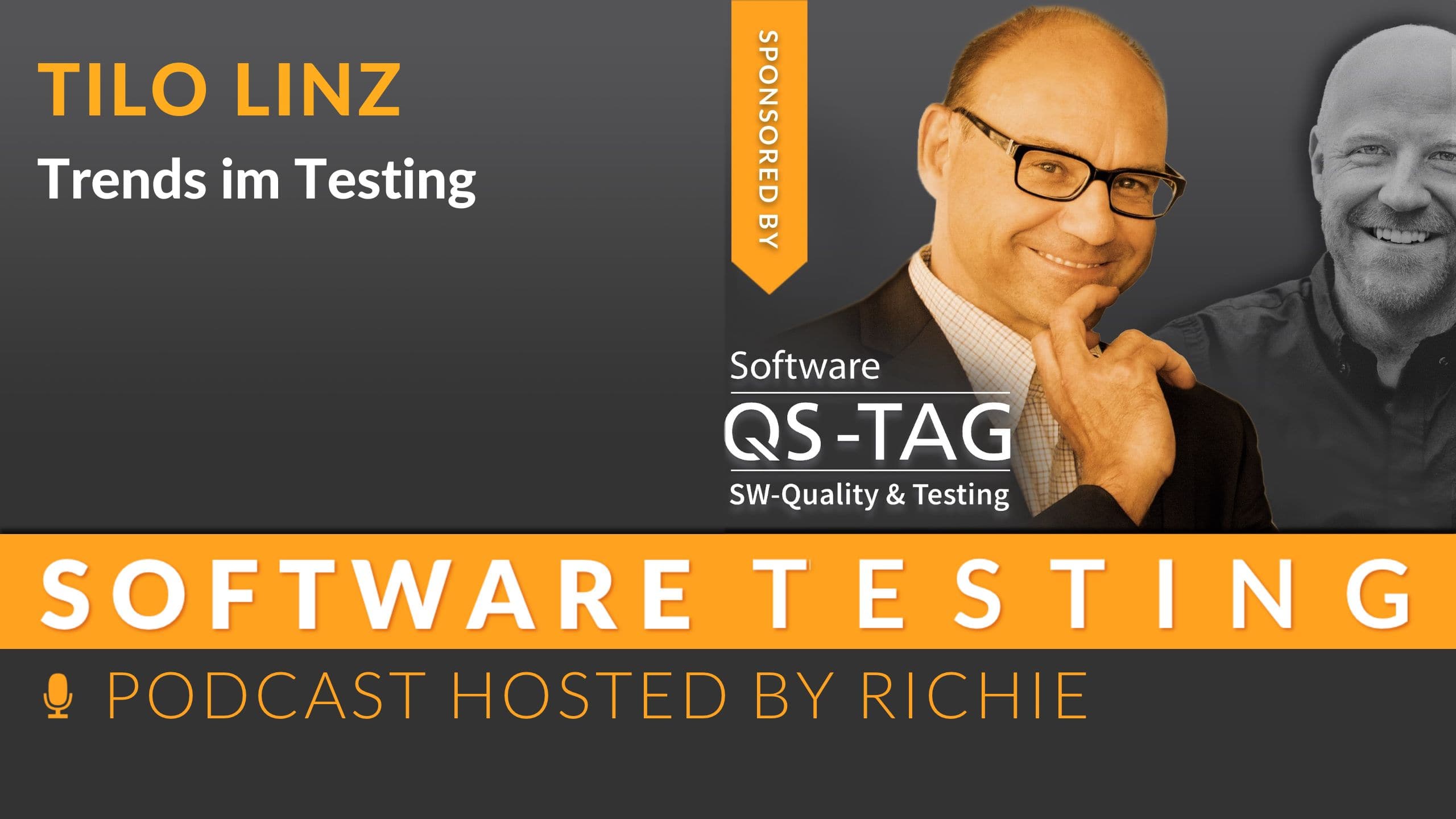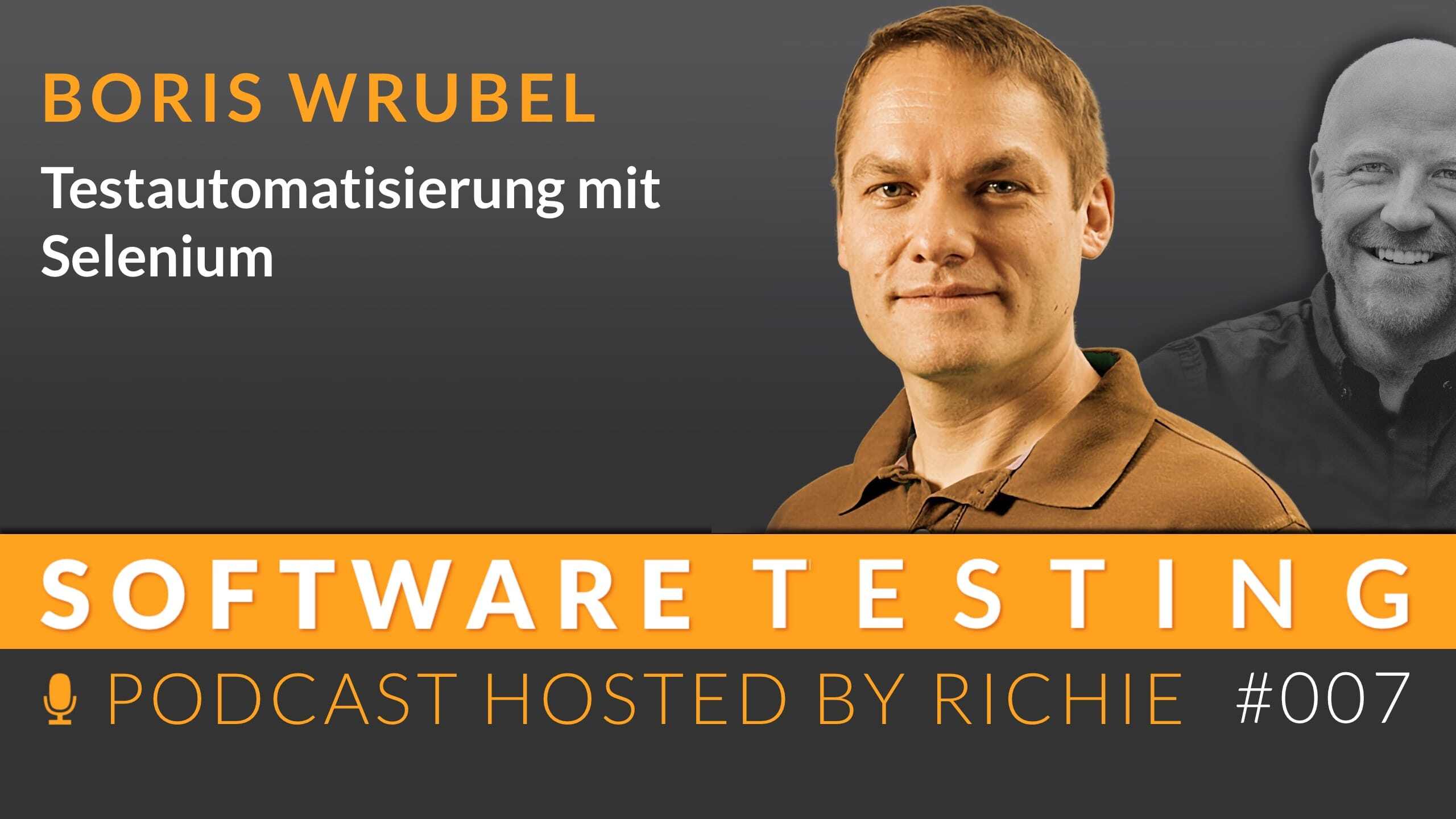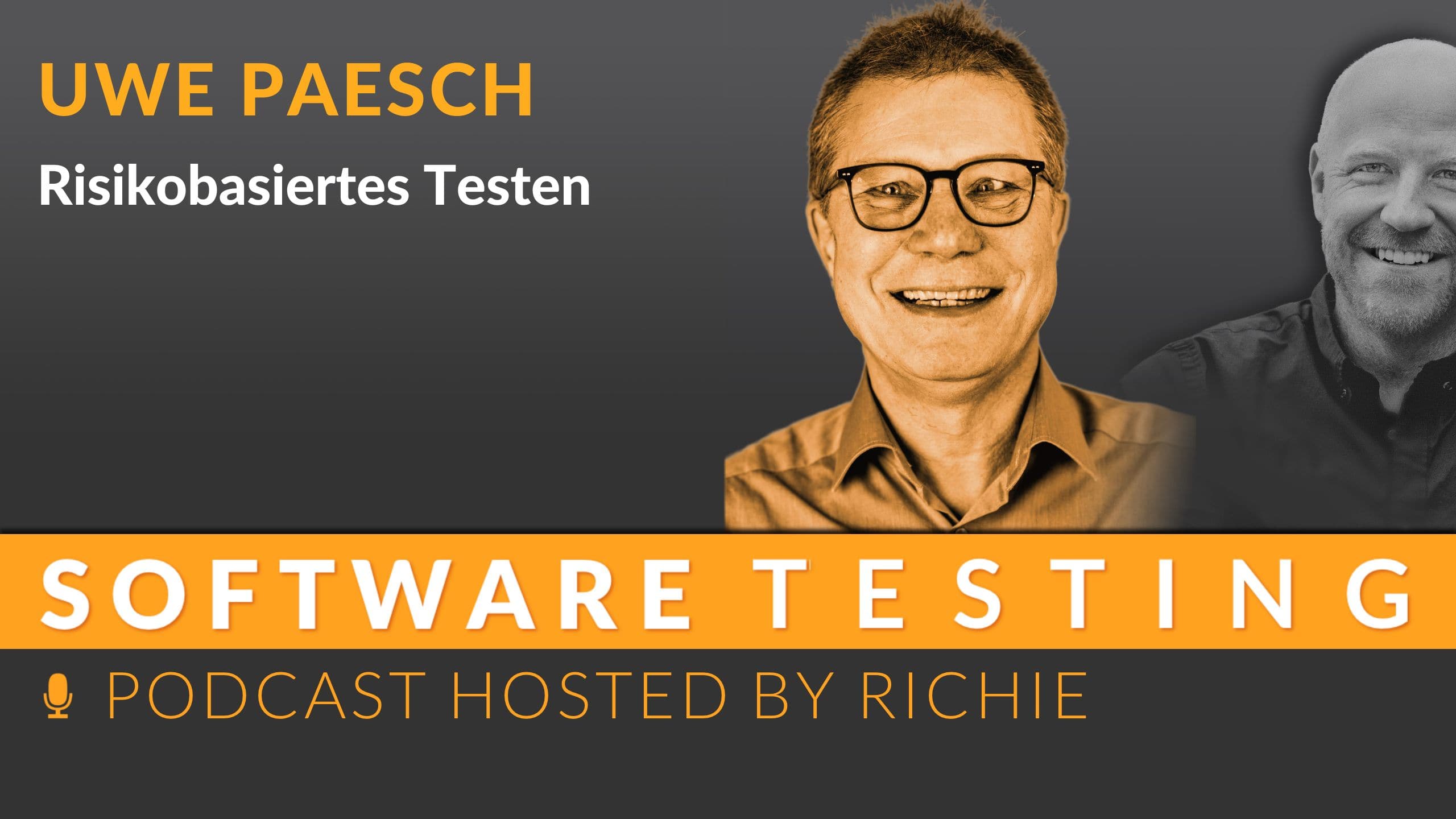Trends in Testing
The further development of software testing is increasingly characterized by artificial intelligence (AI). Two key areas can be distinguished: the...

In recent years, the Robot Framework has evolved from a testing tool to a versatile automation platform. Thanks to its technology-agnostic architecture, users can automate a wide variety of systems - from web to mainframe. This is made possible by numerous community-developed keyword libraries. Originally initiated by Nokia, the open source project now has over 70 member organizations, a growing user base and a well thought-out financing model. The culture of participation is particularly remarkable: thanks to open development, a lively community and regular conferences, the tool remains dynamic - with a focus on comprehensibility, flexible expandability and sustainable further development.
In this episode, I talk to René Rohner about the Robot Framework, an amazingly versatile open source test automation tool that thinks far beyond testing. What started out as simple keyword-driven testing has now evolved into a generic automation framework that can do everything from RPA to mainframe testing. René, Chairman of the Robot Framework Foundation, takes us into the community, which is alive and kicking with thousands of members and millions of downloads. We shed light on technological cascades, data connection, sustainable financing - and why open source is more than just free code.
"Today we say: Robot Framework is a generic automation framework - no longer just for testing." - René Rohner
René Rohner is Product Owner of the test automation value stream and Principal Consultant at imbus AG.As Chairman of the Board of the Robot Framework Foundation and Open Source Enthusiast, he is actively involved in the further development and dissemination of open source solutions.He is a developer in the core team of the Playwright-based keyword library "Robot Framework Browsers" and developer of other open source libraries for the Robot Framework.He is a trainer and coach for keyword-driven testing and co-author of the book "Keyword-Driven Testing"
The Robot Test Framework is a generic automation framework characterized by its keyword-driven testing methodology. It was developed to facilitate acceptance testing and is used by numerous companies both in Finland and worldwide. The architecture of the framework allows users to write tests in an easy-to-read syntax that is accessible even to professionals without in-depth programming knowledge.
The importance of test automation in modern software development cannot be overemphasized. By automating tests:
The Robot Testing Framework supports these goals by providing a flexible and adaptable solution that integrates seamlessly into various software development environments. The ability to interact with different automation technologies makes it a valuable tool for developers and testers alike. A well-chosen E2E Test Automation Framework can help to significantly increase the effectiveness of test automation.
A popular choice for many organizations is Test Automation with Selenium, which enables precise testing and can be easily integrated into existing projects.
Overall, test automation has evolved from an optional practice to a necessity to increase efficiency in quality assurance. Using a structured approach to introducing test automation offers numerous benefits and should therefore be seriously considered.
The Robot Test Framework was originally developed by Hans Bovalda and has since evolved into a versatile automation tool. The first applications took place in Finland, where the framework was used to support acceptance testing.
The open source availability, which was initiated in 2005 and officially implemented in 2008, played a decisive role in the dissemination and further development of the framework. Nokia Helsinki was instrumental in this decision, which led to the Robot Tester Framework gaining a broad user base.
Thanks to its open structure, the community can actively contribute to further development, which further increases the flexibility and adaptability of the tool. This collaboration has made it possible to continuously improve the framework and adapt it to the needs of users.
The Robot Test Framework is a versatile automation framework that can be used in various areas. Users can use it for different types of testing, including system, integration and acceptance testing. One of the outstanding features of the framework is its support for RPA (Robotic Process Automation), which means that it can be used not only for software testing but also for automating business processes.
A key advantage of the Robot Testing Framework is its technology independence. By using adapters, developers can easily connect the framework to different automation technologies. This flexibility allows users to customize the framework to their specific needs while facilitating integration into existing systems.
The user-friendliness of the Robot Test Framework is supported by the keyword-driven approach. This allows users to create tests with a clear and readable syntax, choosing from predefined keywords. This lowers the barrier to entry for testers without extensive programming knowledge and promotes wider adoption among professionals with a technical background.
In summary, the Robot Test Framework provides a robust solution for automated testing in an ever-evolving software landscape, supported by its versatile nature and strong community.
The Robot Test Framework offers a remarkable ability to extend with custom libraries and tools. This flexibility allows users to develop customized solutions that are specific to their requirements. The integration of custom functionalities enhances the framework's adaptability and makes it an ideal choice for companies with special testing needs.
One of the user-friendly features is the use of graphical editors to create test sequences. These editors allow even less tech-savvy users to create and manage tests visually. The drag-and-drop approach makes the process more intuitive, which increases the acceptance of the Robot Test Framework within teams.
In addition, user-defined keywords can be defined to abstract complex test cases and create reusable components. This not only promotes efficiency in testing development, but also improves the readability of tests. The community plays a crucial role in this context by providing resources and support to help new users get started.
Active participation in discussions and the provision of feedback help to continuously develop the framework and adapt it to the needs of users.
The Robot Test Framework offers a variety of unique features that make it a popular choice in the software testing community.
Cascading keywords allow users to create tests without programming knowledge. This feature allows simple test steps to be combined into more complex sequences, making it easier to get started with automated testing and accessible to non-programmers.
Another notable feature is terminal emulation support, especially for 3270 terminals. This extends the applicability of the framework to legacy systems and enables companies to efficiently test older applications.
The Robot Test Framework is also ideally suited for data-driven testing. Support for various databases such as DB2, MySQL and Oracle opens up a wide range of possibilities for carrying out tests with different data sets. This functionality is particularly helpful for applications that rely on extensive data analysis.
The combination of these features contributes to the high popularity of the Robot Testing Framework among consultants and developers in various fields.
The Robot Framework Foundation was founded in 2015 to support the further development of the Robot Test Framework. This initiative was created through collaboration between competitors and Nokia. The foundation plays a central role in promoting the framework by providing financial support.
This structure allows the community to work towards a common goal: the continuous improvement and adaptation of the Robot Testing Framework to the changing requirements of software development. With a budget of around 250,000 euros per year, targeted projects and initiatives can be realized, which secures the future of the framework.
One example of such innovative developments is the use of GenAI in test automation, which offers new approaches to increasing efficiency - from test case creation to code generation from sketches.
The development budget of the Robot Testing Framework amounts to around 250,000 euros per year. These financial resources are crucial for future developments, especially for the upcoming version 8 of the framework, which will offer additional API functions.
The role of the community is very important in this context. It actively contributes to improving the documentation and supports the identification and correction of error messages. Volunteer members are involved in working groups to provide feedback and process requests.
In addition, conferences play a central role in the Robot Testing Framework ecosystem. These events not only provide networking opportunities, but also promote the exchange of ideas and solutions among participants. Active participation in such conferences strengthens the community and contributes to the continuous development of the framework.
User engagement has a direct impact on the future of the Robot Testing Framework and its adaptability to modern requirements in software development. To ensure this adaptability, it is important that the community has the necessary knowledge. This is where Richard Seidl's book comes into play, which provides comprehensive information on concepts, methods and techniques of test automation and can therefore make a valuable contribution to the further education of the community.
The Robot Test Framework offers numerous advantages that make it an optimal choice for testers:
Participation in the community not only promotes personal growth, but also the further development of the framework. Testers are invited to get actively involved to help shape the future of the Robot Test Framework.
The Robot Test Framework is a generic automation framework that specializes in test automation. Test automation plays a crucial role in modern software development as it increases efficiency and improves the quality of software products.
The Robot Testing Framework was developed by Hans Bovalda. It has been available as open source since 2005 and has been further developed with the support of Nokia Helsinki.
The main features of the Robot Test Framework include keyword-driven testing, technology independence and user-friendliness. It also supports Robotic Process Automation (RPA) and enables the use of adapters for various automation technologies.
The Robot Test Framework offers the possibility to extend it with your own libraries and tools. Users can use graphical editors to create test sequences and define custom keywords.
The Robot Test Framework offers unique features such as cascading keywords, support for terminal emulation (e.g. 3270) and data-driven testing with various databases such as DB2, MySQL and Oracle.
The Robot Framework Foundation was established in 2015 to promote the further development of the Robot Framework testing framework. The Foundation receives financial support through membership fees to fund future developments, including planned features in Robot Framework 8.

The further development of software testing is increasingly characterized by artificial intelligence (AI). Two key areas can be distinguished: the...

Boris Wrubelis a test automation specialist. In the interview, we talked about the automation framework Selenium. Based on his project experience,...

Risk-based testing can help to significantly improve test coverage in software projects and minimize potential risks in testing, especially in the...